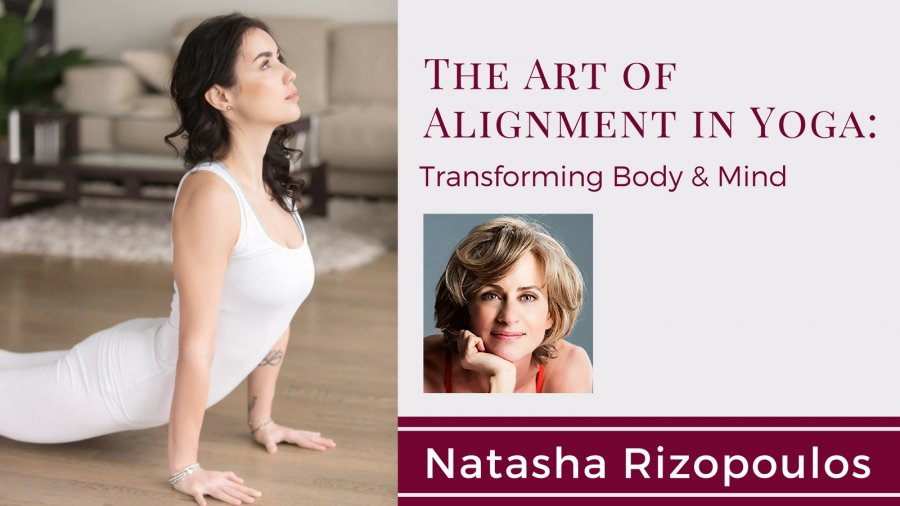Free Download! Natasha Rizopoulos: The Art of Alignment in Yoga - Transforming Body & Mind
Course Info
- Price:
- $0.00
Natasha Rizopoulos
 As a dedicated Ashtanga practitioner for many years, Natasha is equally captivated by the precision of the Iyengar system. These two traditions inform her teaching, creating a mindful and dynamic blend of Vinyasa Flow. Now a Senior Teacher with Down Under Yoga, and a writer, teacher, and DVD...
As a dedicated Ashtanga practitioner for many years, Natasha is equally captivated by the precision of the Iyengar system. These two traditions inform her teaching, creating a mindful and dynamic blend of Vinyasa Flow. Now a Senior Teacher with Down Under Yoga, and a writer, teacher, and DVD... 
Yogas Citta Vrtti Nirodhah . “Yoga is the quieting of the fluctuations of the mind” ~ Patanjali’s Yoga Sutras
In these days of fast-paced Vinyasa Yoga practice, we sometimes lose sight of the importance of alignment, notes master yoga teacher Natasha Rizopoulos in this free download.
Most people are aware of the importance of alignment both for a safe practice, but also to establish the steps that will enable you to progress to more challenging postures over time.
However, Natasha notes, the focus on the fine points of alignment in our yoga practice also is a means of accomplishing what Patanjali in his Yoga Sutras described as the essential purpose of yoga: Yogas Citta Vrtti Nirodhah. “Yoga is the quieting of the fluctuations of the mind.”
When practiced with a focus on the fine points of alignment, yoga quiets the mind and, it can help give us a perspective on our often wayward thoughts and feelings.
Over time, as the mind gets habituated in dwelling on the fine details of practice, adept at not giving each and every thought or feeling your full and undivided attention.
Yoga is any practice that helps to calm the mind and create any small amount of space between one’s sense of the Self and the thoughts and feelings that at any given moment seem to define the self.
According to Patanjali, it’s the identification with thoughts and feelings that causes suffering not the thoughts and feelings themselves. So if you can put a tiny bit of distance between them and your sense of who you actually are, then life can be a little bit less painful. And your mind can be a little bit less hectic.
Similarly, when you practice postures you learn to use the physical body as a way of focusing your attention in the immediate present, on what is actually happening.
When you develop this ability to choose where you place your attention in asana and meditation, it becomes a skill that you can try to implement in the rest of your life as well.
Also check out Natasha's course on YogaUOnline: Foundations of Teaching & Practicing Yoga: Forward Bends and Backbends